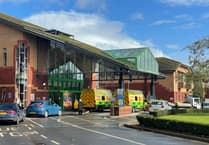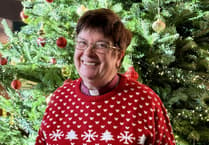WE have just passed the remembrance season and many of us will have been at services of remembrance by war memorials, or have taken more notice than usual of these symbols which are part of the landscape, and many will have had poppy wreaths placed beside them, such as Crediton Town and Hamlets War Memorial on Union Road.
At the end of the Great War thousands of memorials were created, and can be found in communities through the country.
They range from large town memorials, down to plaques in schools, workplaces and churches.
Created locally, they can tell a story of a point in time as people came to terms with the losses of men from their community.
In some places parks, community halls or libraries were created as the memorial. Some were organised by committee, elsewhere someone took charge and paid and arranged it themselves.
Quite often they were placed inside or outside churches, as community focal points and where people naturally came to contemplate on their own, and where people would gather for other significant occasions.
There was a fear a number of years ago that interest was waning in Remembrance activities.
However there has been an increased interest, and many remembrance events have grown in size.
There has also been a renewed interest in looking into the people named, so that they are more than just names.
There is something about remembering and wanting to mark occasions, whether the loss of someone or people, or something significant.
Individual memorials can be created, at home or somewhere which is special. One example are the numerous benches with dedication plaques on them.
In the Bible there are various occasions when people, either individuals or the nation of Israel, created memorials and monuments as reminders.
Often these were large piles of stones, simple, but they knew what it signified.
When Jacob wrestled with an angel he made a memorial to remind him of that encounter and mark what happened.
Other times the nation of Israel erected markers at significant times, such as when they entered the promised land.
The name Ebenezer, now associated with a Christmas Carol, comes from a stone that was used as a monument by the prophet Samuel, to remind people of God’s blessing.
Sometimes we need a tangible reminder to link something in our mind, such as remembering, to help it feel real.
People then wanted to mark significant encounter with God, change in the nation’s history or the people who had gone before.
They can be a time to reflect and a reminder God is with us in the good and bad.
Remembering is about looking forward as well as looking back.
It is also an encouragement as we go forward, thinking about those who have gone before us to inspire us.
That family and friends no longer with us are not forgotten as we live our lives.
It can also be a reminder of God who is there beside us, of those times we know his presence, and reassuring us at other times.
Paul Hudson
Crediton Congregational Church





Comments
This article has no comments yet. Be the first to leave a comment.